Houseplants are more than just greenery—they breathe life into your home and brighten up even the dullest corners. While decorative pots and planters are lovely, hanging baskets take indoor plant styling to the next level. There’s something magical about lush vines or leafy foliage spilling over the edges, creating a floating garden that adds depth, charm, and natural beauty to any room.
But here’s the thing: not every plant is cut out for the high life. In this guide, we’ll share the best indoor plants for hanging baskets—the ones that not only thrive overhead but also look amazing doing it. We’ll also walk you through choosing the right container and hanging method, whether you’re into earthy macramé, sleek wire frames, or modern minimalist designs.
Ready to create your own indoor jungle? Let’s get hanging.
Best Indoor Plants for Hanging Baskets

Image Credit: Shutterstock.
Any plant that vines will look great in a hanging basket with the vines trailing down below. If placed in front of a window, you may want to rotate from time to time (such as each time you water) so that the plant grows more evenly and doesn’t get heavier toward one side over another as it stretches for the sun.
You should also be sure to trim or “groom” your vining plants, as needed, if they start to get too leggy over time. Most vine plants will propagate well, so you can just cut some off the bottom when it gets to be too much and then propagate them into new plants.
Now, here are the best indoor plants for hanging baskets.
1. Arrowhead plant (Syngonium podophyllum)

Image Credit: Shutterstock.
The arrowhead plant is a perfect choice for hanging baskets.
They get their name because the leaves grow into shapes that look like arrowheads. It is sometimes also called arrowhead vine or “five fingers.” They come in various shades of pink, green, and burgundy and are reasonably easy to care for. Plus, they like humidity, so a bathroom or kitchen corner is great..
2. Boston Fern (Nephrolepis exaltata)
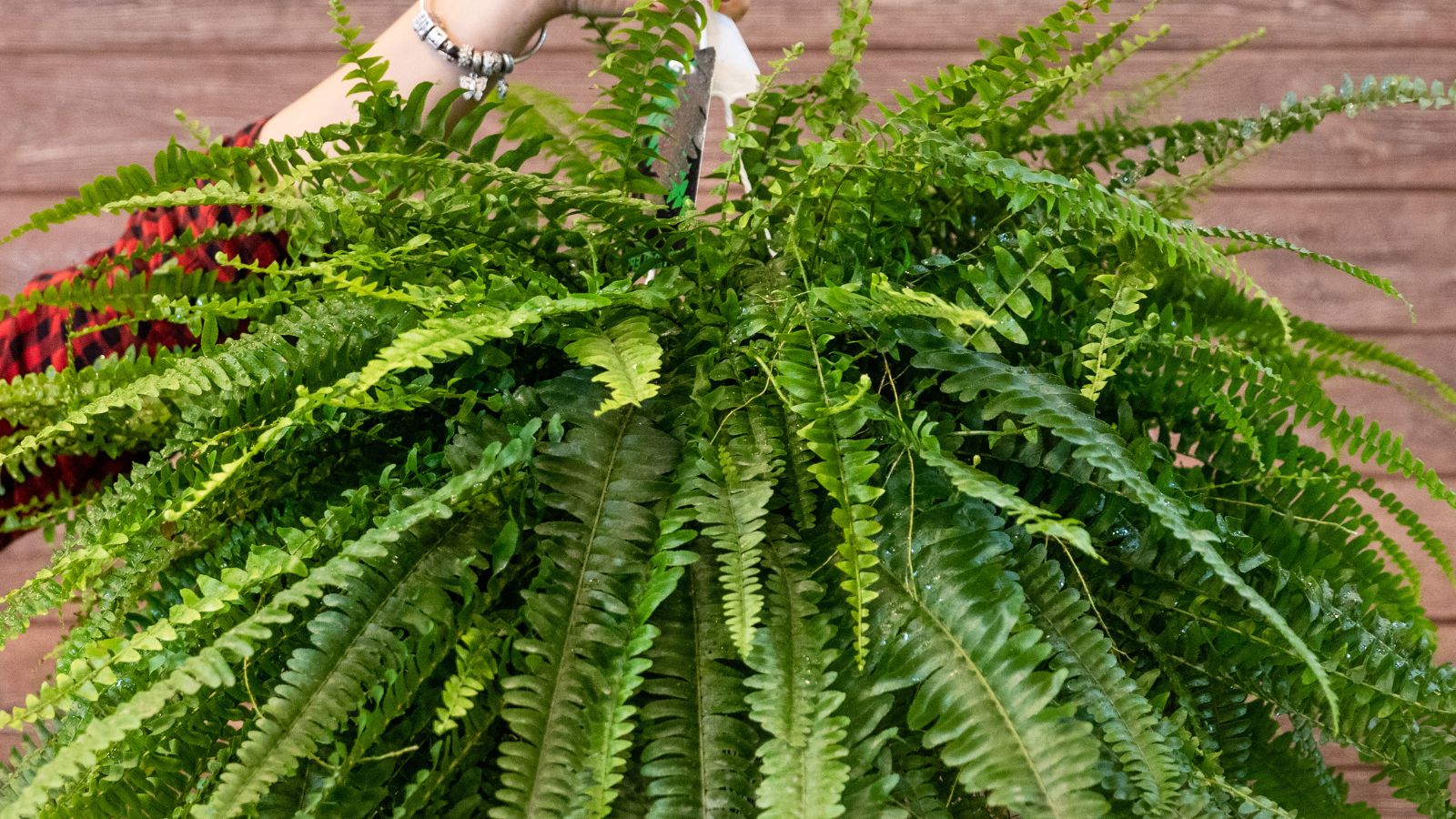
Image credit: YAY Images.
The Boston fern is one of the most well-known ferns. For years, I admired them but wasn’t able to keep one alive. My issue was overwatering the soil but not misting the leaves for humidity. If you live in a dry climate, you must mist this one. They also like to be hung far from the top of the ceiling to allow for proper air circulation.
All in all, they are easy to care for, though, and they look beautiful in a hanging basket.
3. Burro’s Tail (Sedum morganianum)
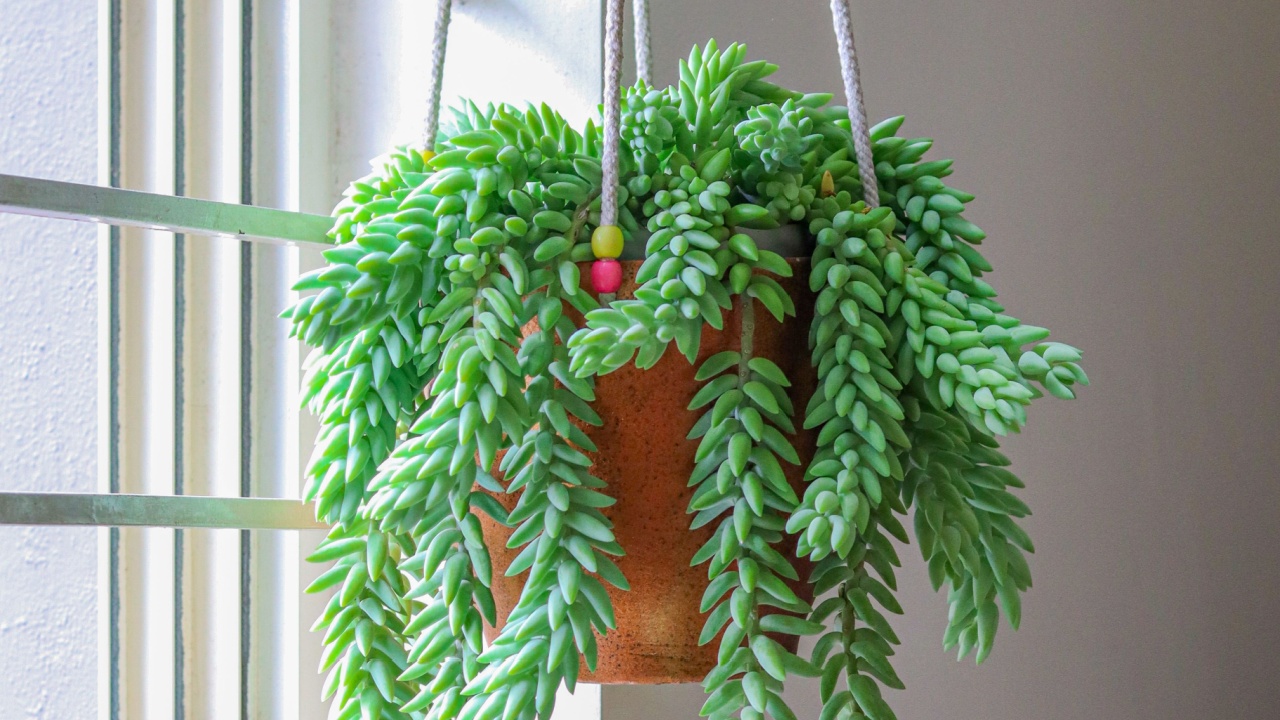
Image Credit: Shutterstock.
Next up on the list is Burro’s tail, a type of succulent. This beautiful succulent has thick, fleshy leaves that help it retain water. They don’t need to be watered as much, and they enjoy bright sunlight.
It’s a very low-maintenance plant, and it looks very unique when hanging from a basket.
4. Devil’s Ivy (Epipremnum aureum)

Image Credit: Shutterstock.
Pothos is one of the most common houseplants available today. Devil’s ivy is a type of pothos, but all pothos do really well in hanging baskets. They are easy to care for, forgiving of neglect, and can grow fast and long in the right conditions.
Some people have Devil’s ivy for decades, allowing it to cascade down from baskets, vine around the room, and trimming and propagating when needed.
5. Heartleaf Philodendron (Philodendron hederaceum)

Image Credit: Shutterstock.
Philodendrons are similar to pothos and equally easy to care for.
The heartleaf philo gets its name because the leaves take the shape of hearts. It does best in medium indirect light but can also do okay in low light. Avoid direct sunlight for too long, or it will scorch the leaves. Higher humidity will help it grow faster and have larger leaves. You can mist if your air is dry.
6. Spider Plant (Chlorophytum comosum)

Image Credit: Shutterstock.
Spider plants are sometimes also called “airplane plants,” and they look amazing in a hanging plant holder.
When growing spider plants in hanging baskets, it’s important to be sure you use a well-draining potting mix. They like even moisture, so not too much in any one direction. They like bright to moderate indirect sunlight but not direct sunlight. If you are seeing brown tips on the leaves, it’s probably from too much sun.
7. String of Pearls (Senecio rowleyanus)
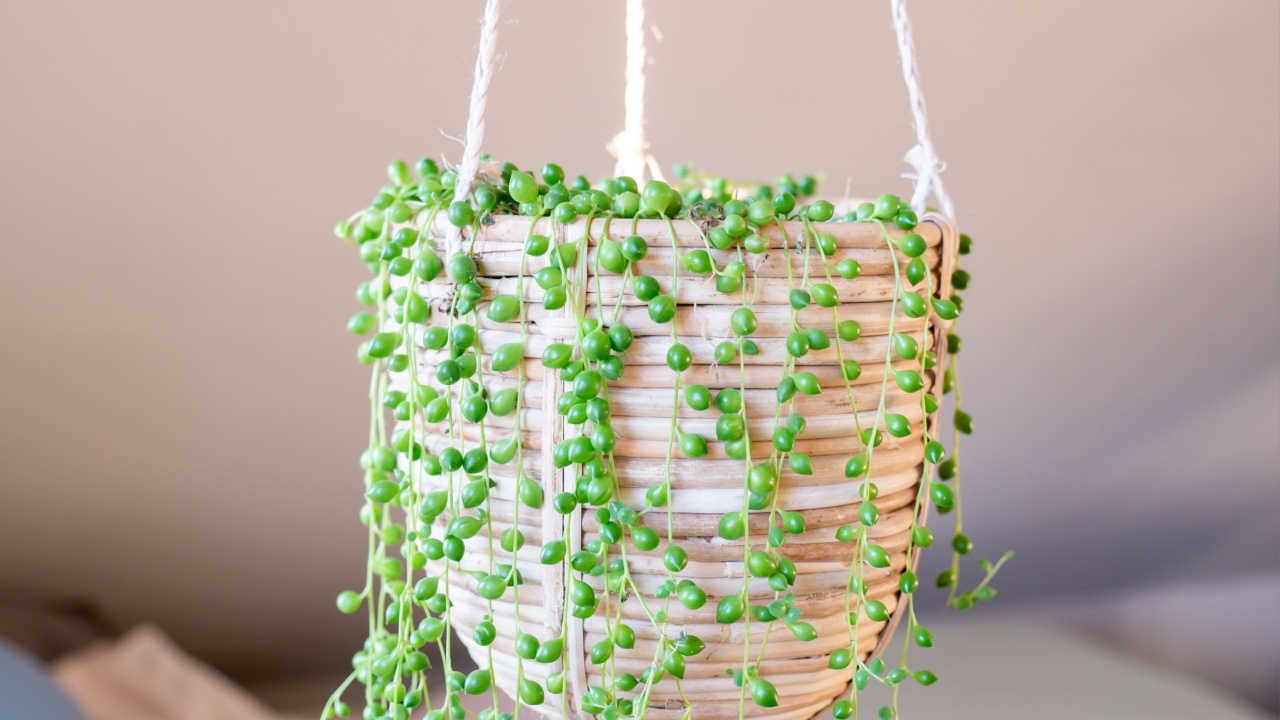
Image Credit: Shutterstock.
The string of pearls gets its name from the round shape that resembles a green set of pearls. All string plants can look good in a hanging basket, but this one is especially pretty when it grows long and full, and the pearls cascade down.
It likes bright light, so it will do best in a sunny window. If you lack sunlight, consider a grow light to help it along. Don’t overwater! They’re very sensitive to this and only need water once every two weeks.
8. Morning Glory (Ipomoea)
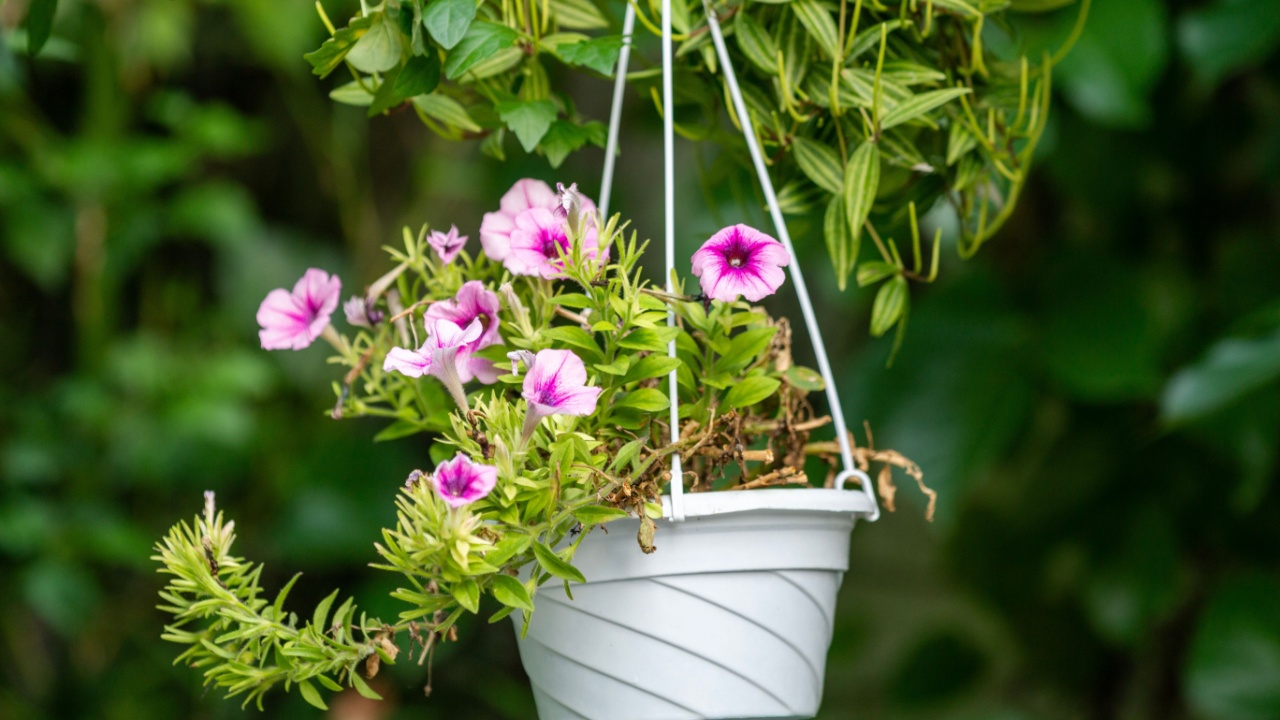
Image Credit: Shutterstock.
Morning glory is usually found outside, growing up on a trellis, fencing, or anything else it can find to climb. While it may not seem like a traditional indoor plant, it’s an excellent choice for hanging baskets. HThey grow very fast, even from seed, and can be planted in a basket and then placed wherever you like in your home. There are a lot of different varieties that will give you various colors, like blue, indigo, purple, pink, etc.
9. String of Hearts (Ceropegia)
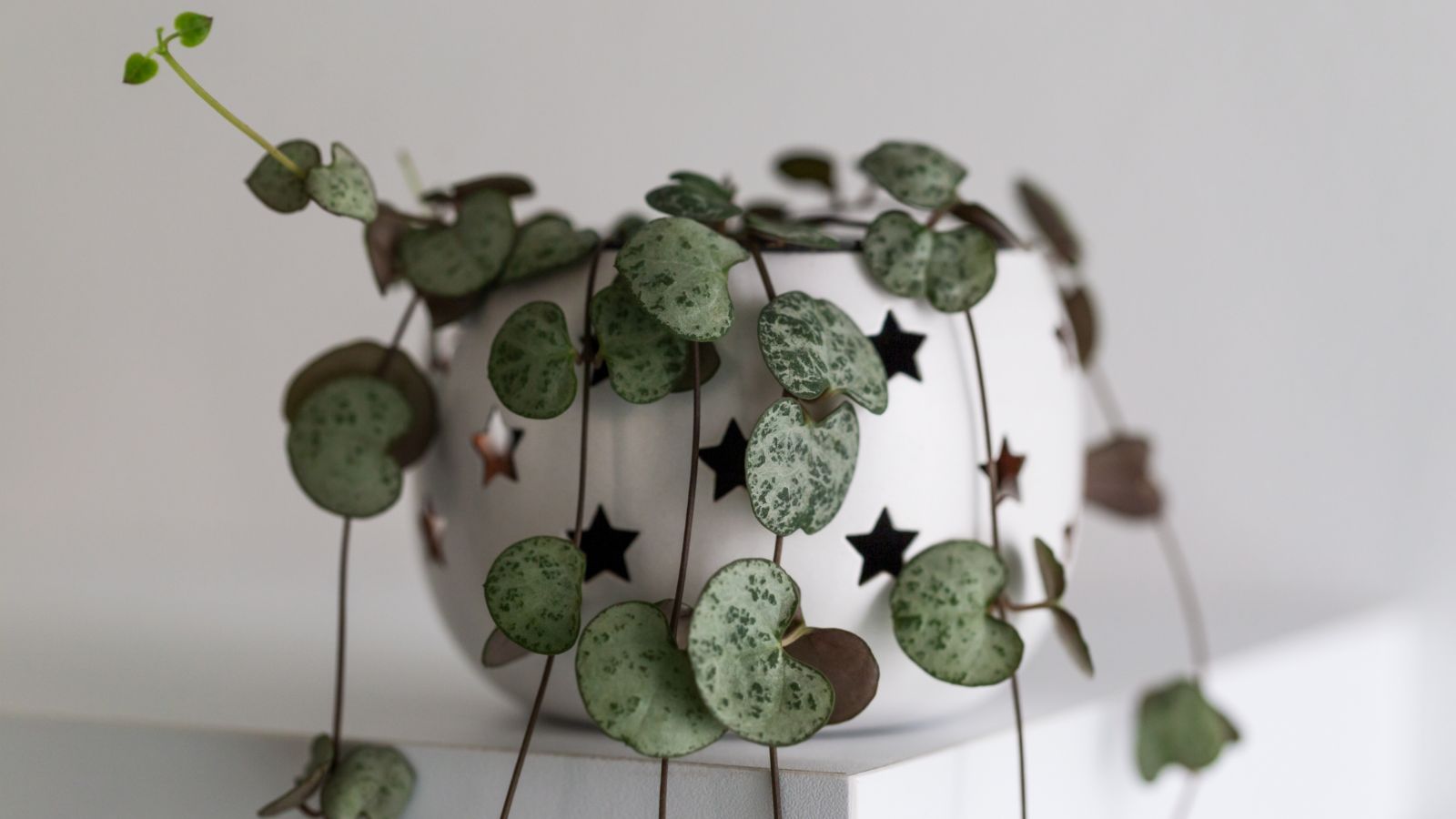
Photo Credit: Depositphotos
Another string plant that looks great in a basket is the string of hearts. Again, thus named because it is shaped like a heart; this succulent will do well in a bright window. Don’t overwater. They can be a little tricky for beginners to care for, but once you get the hang of it, they’ll do well. It’s also very tolerant of indoor living conditions.
Here’s how to propagate strings of hearts.
10. English Ivy (Hedera helix)

Image Credit: Shutterstock.
English ivy is also known by the common name of simply “ivy”. It’s a beautiful, green, glossy plant that can be invasive when grown outdoors, but makes a perfect indoor plant for hanging baskets.
It does really well in low lighting, and it looks beautiful when hanging. Plus, it’s known for its air-purifying qualities.
11. Lipstick Vine (Aeschynanthus)

Image Credit: Shutterstock.
Lipstick vine comes in shades of red, pink, and orange and gets its name from the flowers that bloom. The plant looks great in a hanging basket, even when not in bloom, and can light up the room when the flowers come in.
It prefers bright, indirect light. It needs to be watered regularly, but even more in spring and summer, and less in winter.
12. Black Pepper Vine (Piper nigrum)
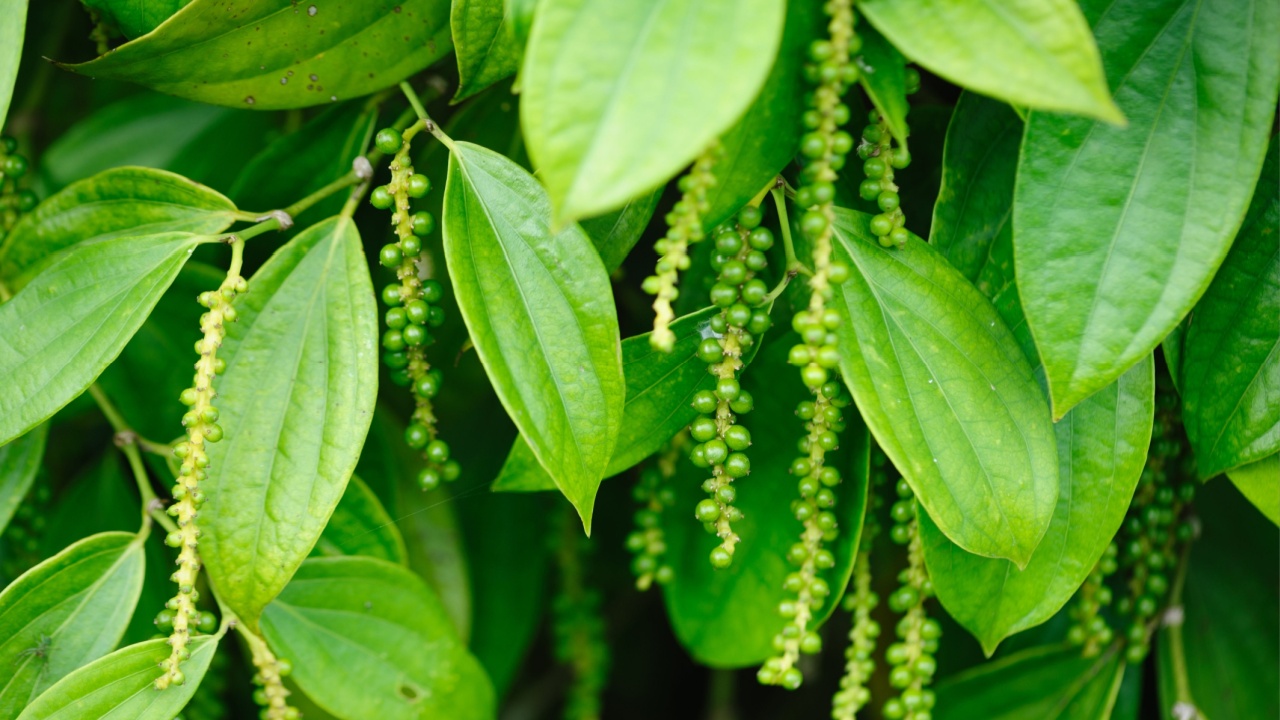
Image Credit: Shutterstock.
Black pepper vine is the same plant you get the pepper spice from, but it also looks amazing in hanging baskets in your home.
It has a unique look to it, which will set it apart from other houseplants. It needs a lot of light to produce the peppercorn berries (what we get pepper spice from), and you can also use artificial light for this if you’re struggling to get it naturally.
13. Goldfish Plant (Nematanthus)
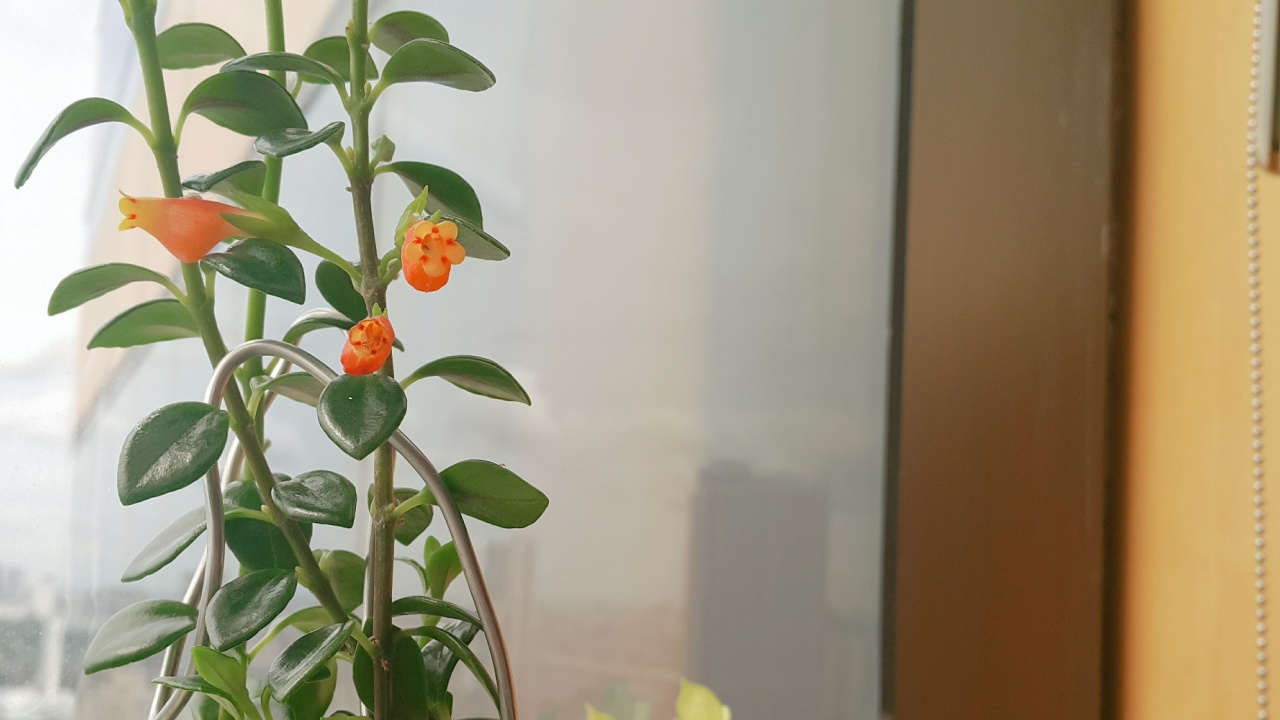
Image Credit: Shutterstock.
The cute little blossoms on this plant look like goldfish, and the green, glossy leaves are pretty year-round. It is sometimes also called Christmas holly because it blooms in the winter.
You can use this in a small hanging basket in your kitchen, bathroom, or anywhere else you want a pop of life. It does well in low light and should be watered thoroughly, but then allow the top layer of soil to dry out completely.
14. Queen’s Tears (Billbergia nutans)

Image Credit: Shutterstock.
Queen’s Tears is a type of bromeliad that produces many offshoots, often called “pups,” that you can use to grow more new plants (or share with a friend). They grow well in high and low light conditions, but natural light provides the best blooms. Water the soil lightly and mist the rest of the plant daily. The blooms can come in pink, yellow, green, or purple varieties.
15. Pitcher Plant (Nepenthes)

Image Credit: Shutterstock.
The pitcher plant is a very bold, unique choice. They look fantastic and are sure to get people asking you questions.
There are actually two different varieties. Sarracenia stands upright like a pitcher and is often placed in a pot on a table or desk. Nepenthes hangs down like a dangling pitcher, usually in a hanging pot. The needs can vary based on the variety. Soil should be moist but well-drained. They can have a variety of colors, from red, purple, maroon, white, yellow, and pink.
16. Satin Pothos (Scindapsus pictus argyraeus)

Image Credit: Shutterstock.
Satin pothos is just another variety of pothos. Care is the same as for any other pothos. They are often called the “no-kill” plant because it is so hard to kill them. They’re great for beginners, and look amazing in a hanging basket, allowing their vines to trail below. It likes low light and moist soil, but will tolerate dry spells okay. Just don’t allow the leaves to burn in direct sunlight.
17. Air Plant (Tillandsia)
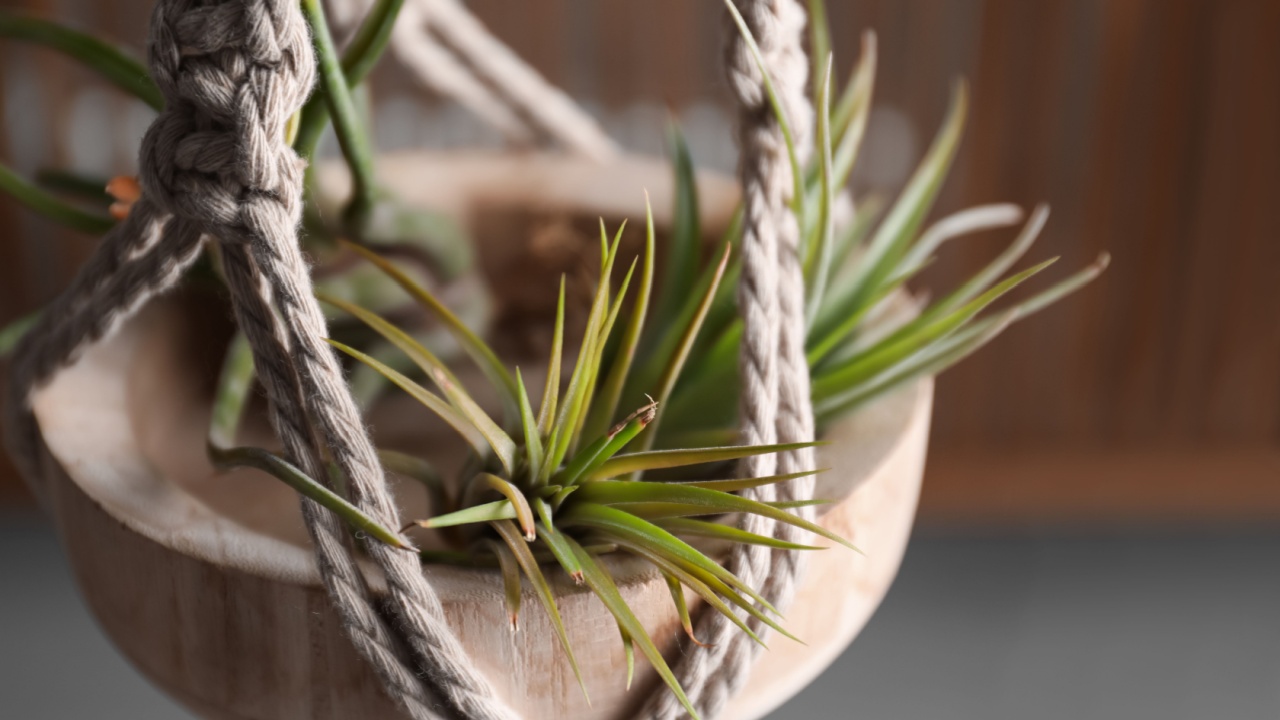
Image Credit: Shutterstock.
There are many different types of air plants, and we’ve seen them grow in popularity in recent years. Even people who have no other houseplants will sometimes get air plants because they are so modern, clean, and easy to care for (just give them an occasional mist).
18. Prayer Plant (Maranta leuconeura)
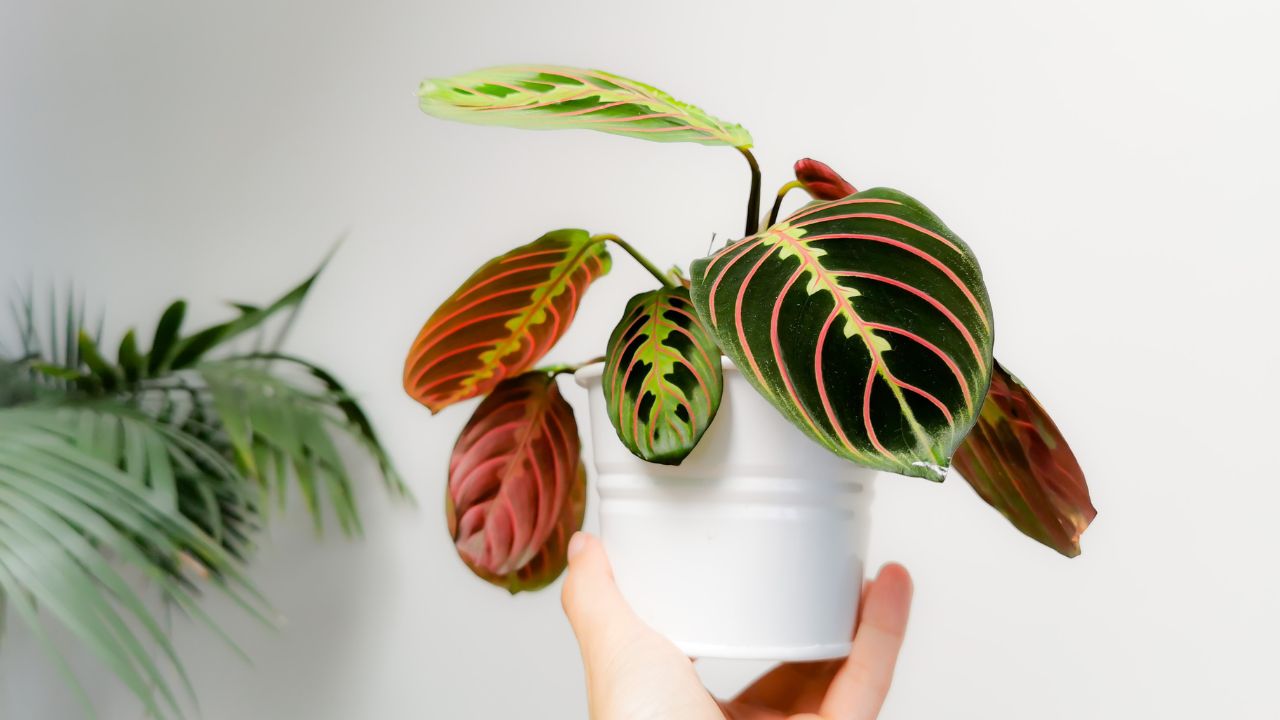
Image Credit: Shutterstock.
The prayer plant is named so because its leaves will fold and look like it is praying. This plant is native to Brazil and prefers moderate light and moist soil. The leaves will curl up in response to darkness and open back up with the morning sun.
19. Bird’s Nest Fern (Asplenium nidus)

Image Credit: Shutterstock.
Here’s another beautiful fern that can do well in a hanging basket. It has upright fronds that grow in a vase-like shape, so it can add some dimension or a unique look to contrast with the typical hanging plants that vine or hang low. It’s slow-growing but easy to care for and looks lovely in any room. Be cautious of overwatering, which can quickly kill this plant.
20. Christmas Cactus (Schlumbergera)
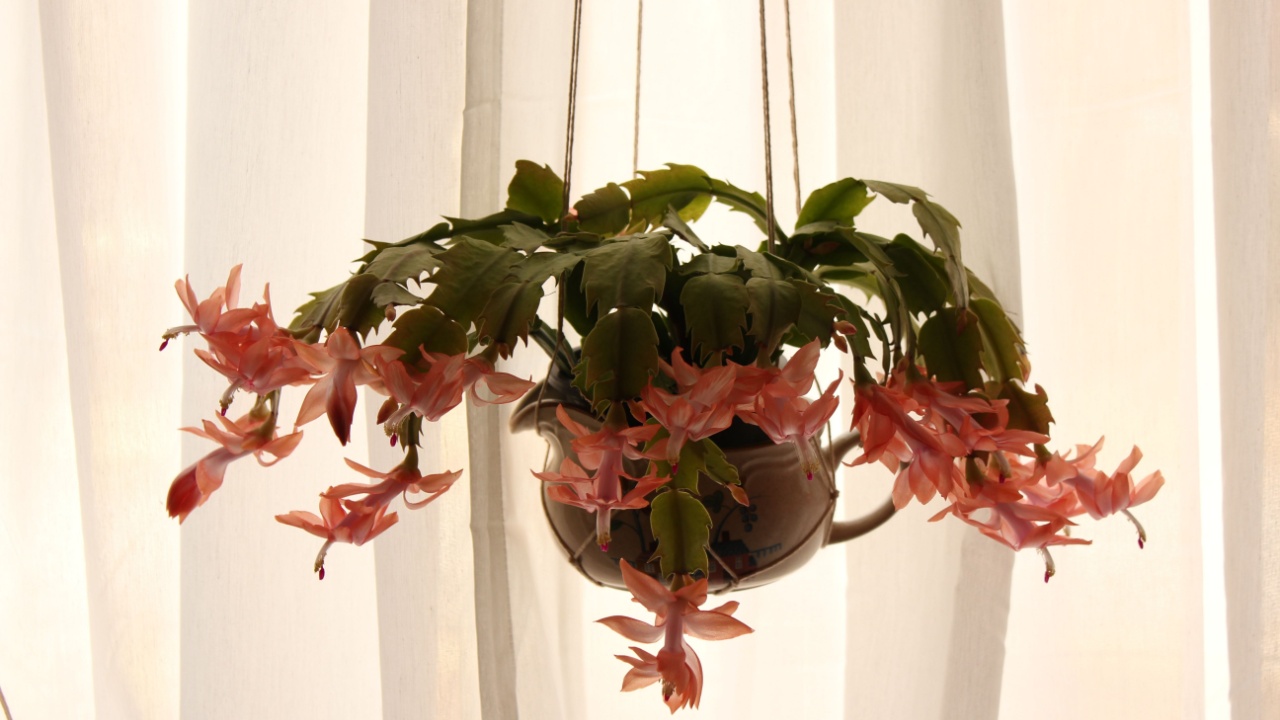
Image Credit: Shutterstock.
The Christmas cactus is a small genus of cacti originally from the mountains of south-eastern Brazil. It is sometimes called a Thanksgiving cactus or crab cactus because the leaf-shaped stem segments resemble a crab. Water about every 2 to 3 weeks when the top layer of soil is very dry. Don’t overwater. They prefer bright, indirect light.
21. Peperomia (Peperomia pellucida)

Image Credit: Shutterstock.
Peperomia is a shallow-rooted herb that can grow from about 15-45cm in height. They have small, heart-shaped leaves and grow on succulent stems. It will do best in bright, indirect sunlight. Just be sure they don’t get too much direct sunlight in summer, or it will burn the leaves. They are relatively easy to care for and are suitable plants for beginners.
22. Maidenhair Fern (Adiantum)
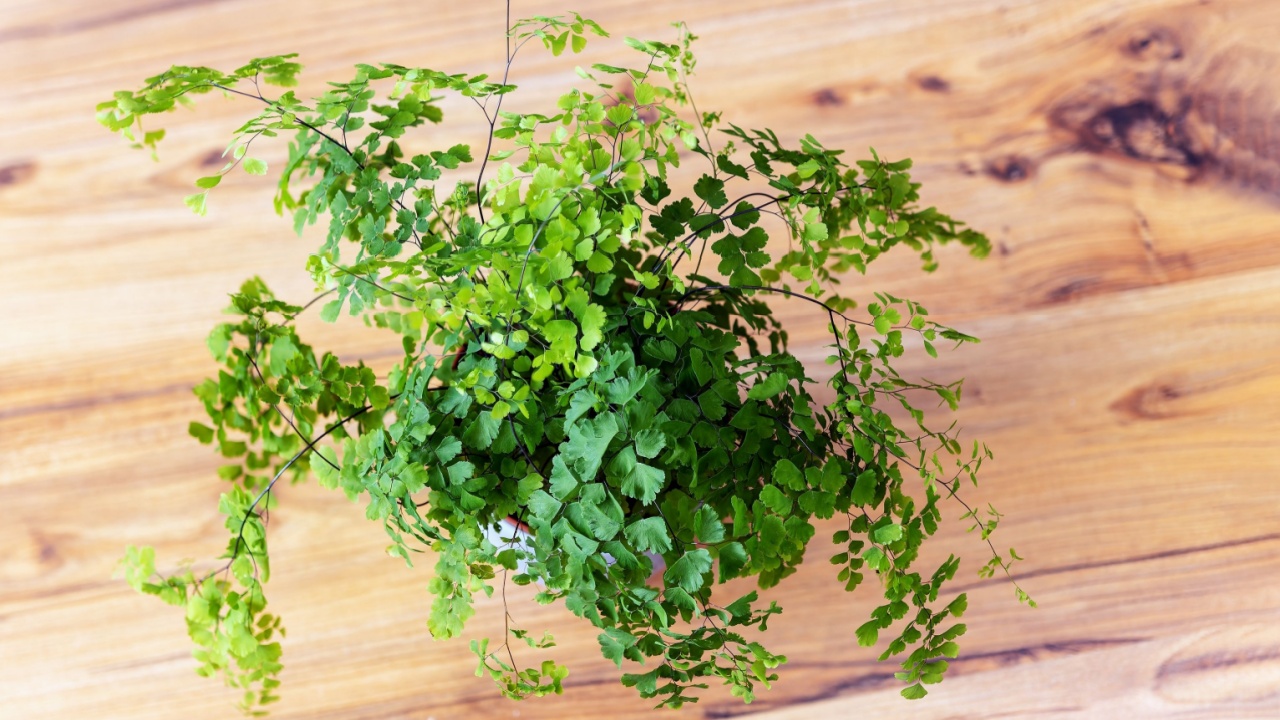
Image Credit: Shutterstock.
Here’s another fern that looks great in a hanging basket. It’s more delicate than some other ferns and smaller than the bold Boston fern, and it’s lovely anywhere. It does need more humidity (at least 50%), so if your air is dry, you will need to mist this one a lot. They do great in sunny bathrooms or any place with light and moisture.
23. Staghorn Fern (Platycerium)

Image Credit: Shutterstock.
Staghorn fern is another good choice for hanging baskets. It prefers a lot of bright, indirect, or diffused light. Direct sun on the leaves will scorch them, so don’t leave them on a porch on a hot summer day or in a window with too much direct sun. You can mist the fronds about once a week and water about once a week in the summer, less in the winter.
Why Have Plants in Hanging Baskets?

Image Credit: Shutterstock.
Maybe you’re asking yourself why you’d want to use hanging baskets in the first place. Some just like the look of it, but there’s also a very good space-saving element to it. You can clear up counter or shelf space, or add more plants to a room when all your shelf space is already used.
You may also choose hanging baskets if you have small children or pets who may get into your plants. It can be safer for them and your plants if you hang them up high where they cannot be reached. This is also a great way to brighten bland wall space and add pop to your space. They can make your house look and feel more cozy and welcoming.
How to Care for Plants in Hanging Baskets

Image Credit: Shutterstock.
You have a great list of indoor hanging plants, but how do you care for them? The care will vary, but here are a few additional things about tending to indoor plants in baskets rather than pots.
- Use a liner
- Check the soil moisture regularly and water when the top inch of the soil feels dry.
- Use well-draining potting soil to ensure good aeration for the plant roots.
- Add a balanced, water-soluble fertilizer and follow the recommended dosage.
- Consider the sunlight requirements of your plants when placing the basket: some plants may prefer bright, indirect light, while others can thrive in low-light conditions.
- Rotate the container occasionally to ensure that all sides of the plant receive equal sunlight, promoting balanced growth.
- Check the leaves and soil regularly for signs of pests.
- If the plants outgrow the basket or become root-bound, repot them into a larger container.
With this list of all these indoor plants for hanging baskets, you have plenty to choose from. Start with one or two, or add more hanging hooks and fill your house. They will bring you so much joy and also help improve the air quality in the home!

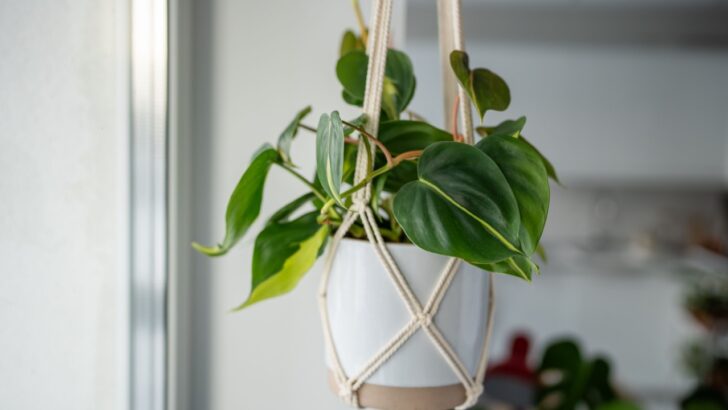

How To Propagate String Of Hearts - 3 Easy Methods To Try
Sunday 7th of May 2023
[…] a beautiful gift for plant lovers, with their ability to trail and cascade down from shelves and hanging baskets. And as an added bonus, the beautiful string of hearts vine produces small, tubular flowers that […]
Are Pothos Plants Poisonous To Cats?
Wednesday 4th of May 2022
[…] are safe. Distract your cat by providing more attractive perches to sit on and put your pothos in a hanging basket it can’t reach. Some people have created cages for their plants, or they use them only in […]
What Plants Are Poisonous To Cats? Quick Guide To Keeping Your Kitty Safe
Thursday 24th of March 2022
[…] to play with, and also by keeping your plants out of reach of your cats. For example, you might use indoor hanging pots, or you can block your cat’s access to the plants. You could also cover the soil in the pot […]
Are Aloe Plants Poisonous To Cats?
Wednesday 23rd of March 2022
[…] have an earnest desire to keep aloes indoors, put them out of the cat’s reach. Adding a few indoor hanging baskets may be the next safest alternative to banning aloes from your home […]
Are Spider Plants Poisonous To Cats?
Wednesday 16th of March 2022
[…] can be grown in hanging baskets, pots, or the garden and make an attractive display on tables, windowsills, or hanging from the […]